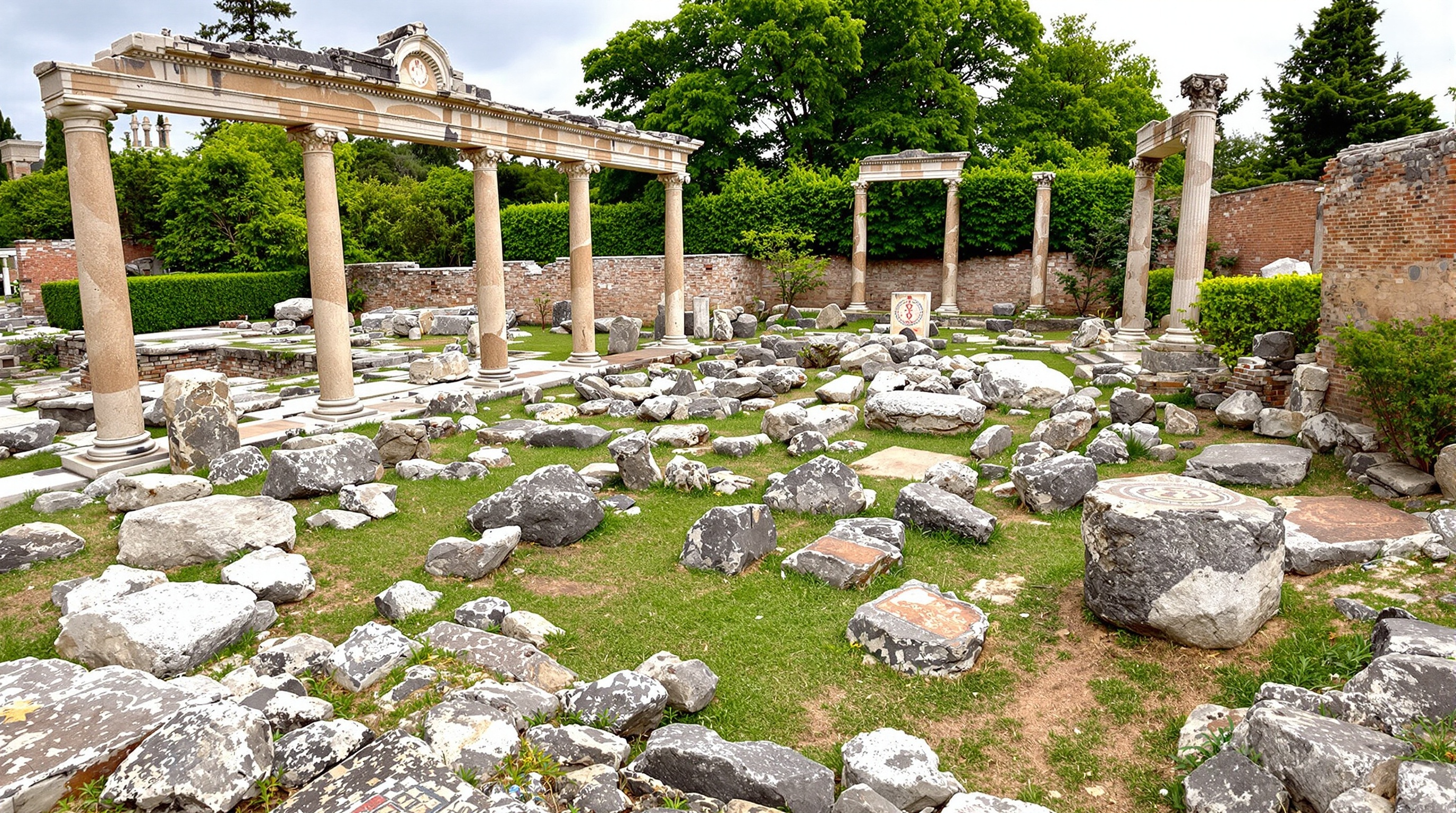
Roman Gardens
A heritage garden showcasing Roman artefacts including columns, hypocaust systems, and mosaics from Chester's 2,000-year history.
Facilities
Roman Gardens showcase Chester's archaeological treasures in an outdoor heritage display created in 1949. Located outside the southeast section of the city walls, this free attraction presents Roman columns, hypocaust heating systems, and mosaic fragments from Chester's 2,000-year history as the fortress of Deva.
The gardens open daily from 9am to 6pm, providing accessible heritage education without admission charges. This democratic approach ensures Chester's Roman legacy reaches wide audiences, from school groups studying history to tourists exploring Britain's Roman past.
Archaeological Displays
The reconstructed Roman columns stand as the gardens' most striking features, salvaged from excavations across Chester and re-erected to suggest the grandeur of Roman public buildings. These stone remnants connected to temples, bathhouses, and administrative structures that filled Roman Deva.
A hypocaust display demonstrates Roman central heating technology, showing the under-floor space where hot air circulated to warm bathhouses and villas. This sophisticated engineering reveals Roman comfort standards and technical capabilities.
Mosaic fragments and carved stones scatter throughout the gardens, each piece representing rooms, buildings, and lives from Chester's Roman centuries. Information boards explain the artefacts' original contexts and archaeological discovery stories.
The collection grows occasionally as construction projects uncover new finds. Chester's continued occupation means Roman layers lie beneath modern streets, revealed whenever development requires archaeological investigation.
Educational Value
School groups regularly visit Roman Gardens as part of history curriculum studies. The outdoor setting and tangible artefacts make Roman Britain concrete rather than abstract, helping students grasp the reality of historical periods.
Information boards provide context for general visitors without requiring guided tours. This self-guided approach allows flexible exploration at individual pace, suiting different visitor needs and time constraints.
The free entry removes financial barriers to heritage education. This access principle means all Chester residents and UK visitors can engage with significant Roman remains regardless of economic circumstances.
The gardens complement Chester's other Roman sites including the amphitheatre and city walls. Together, these locations tell comprehensive stories about Roman military life, urban development, and cultural influence.
Garden Setting
The gardens combine heritage display with pleasant green space, using planting to create attractive surroundings for the archaeological features. This landscaping softens what could feel like sterile museum displays.
Benches throughout allow rest and contemplation, with views across the displays and towards the city walls. The quiet atmosphere encourages reflection on Chester's long history.
The location outside the walls provides context for understanding Roman Chester's layout. The fortress originally extended beyond current walls, with suburbs and cemeteries spreading into surrounding areas.
Seasonal changes affect the gardens' character, with spring and summer offering colourful planting whilst autumn and winter reveal structures more starkly. Each season provides different appreciation of the space.